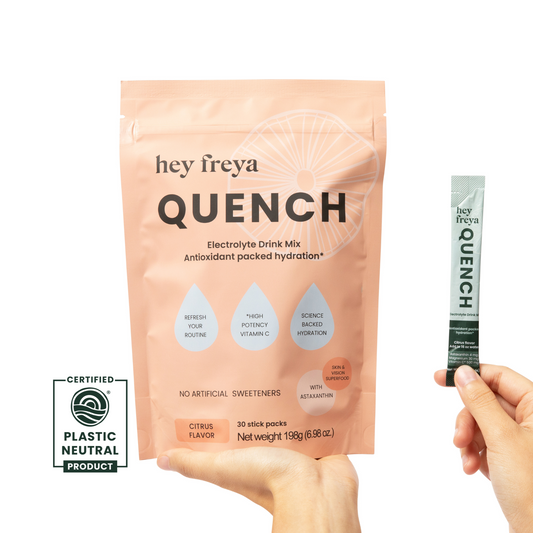First, let’s be upfront: There are many court rulings (ahem, one particular 2022 ruling) that can be dissected, but for now, we want to highlight a little-known moment when a decision improved the lives of millions of people in The United States, the one we call “the abortion ruling that changed everything”: when the FDA repealed restrictions to the abortion pill, making it available by mail.
We know that every step along the way the people who have fought for bodily autonomy and reproductive rights sacrificed their own safety in the process. We know that our appreciation for a few moments will never undermine the huge strides made by those who made it possible to have abortions safely and legally.
In the 1980s after Roe v. Wade was passed, the primary mode of managing abortions globally and legally was surgical. That means that you would enter a clinic or hospital, have a litany of blood tests and ultrasounds to ensure the safety of the procedure, and then schedule a date to have the fetus or embryo removed.
Around this time, across multiple countries and according to need, there was a ground shift of pregnancy terminations being done through medications at home. Despite being used since the late 1980s in other countries, it took until the year 2000 for the United States FDA to approve this medication combination, often called mife-miso, of misoprotol (a uterine contraction agent) and mifepristone (a progesterone blocker) for use in medical abortions.This medication combination removes the need for a surgical procedure. The body does the work.
This approval was wrought with politics and safety assessments, but upon availability, the need and benefit were immediate and obvious. Abortions no longer required an invasive and sometimes traumatizing experience of visiting a clinic (think; crossing picket lines, sitting in stirrups, and having a physician you’ve never met before, perform a procedure that enters through your cervix). This was a shift in prioritizing patient health experiences. All of a sudden, you had a medication that you could take in the privacy of your own home. You knew from a provider’s guidance that your uterus was going to contract strongly and the pregnancy would be terminated by that time. It took the experience from being sterile, invasive, and clinical into personal, visceral, and with the space and time for the body to respond to the medications.
Despite having safe medication, due to being (appropriately) cautious and wanting to truly take care of the people who were having abortions, the clinical screening remained the same - the tests, the imaging, the scheduling of appointments, and the dispensing of the medication.
Enter the global pandemic, the world screeching to a halt. On March 11th, 2020, while we could delay surgeries, uteruses didn’t have the capacity to stop the progression of a pregnancy. People still needed safe and medically managed abortions. Very quickly, practitioners had to pivot to find ways to assess their patients without seeing them and without sending them for blood draws and ultrasounds.
However, the pills themselves were considered too dangerous to be available by prescription at a pharmacy. You would have to visit a clinic where the provider would dispense the medication in person.
And then came this ruling. This incredible ruling thanks to the work of the American Civil Liberties Union (ACLU). The ACLU filed a lawsuit against the FDA, that during Covid-19, forcing patients to come into an office to access abortion pills posed a huge medical risk to the doctor and the patient. And they won. As long as the federal government has declared a public health emergency, abortion pills could legally be mailed to a patient. The ability to mail abortion pills to patients changed everything that our society had taught us that abortion should be.
Abortions can be safe, private, and self-driven. While it was only created to last through the pandemic, what it allowed for is a paradigm shift, a precedent, and a stepping stone for post- pandemic abortion pill rulings to build on.
What has been uncovered in this storm of lockdown restrictions, screening changes, and the mife-miso pills is that telehealth abortions and in-person abortions have absolutely the exact same outcomes in terms of safety and efficacy. What was also discovered is that abortions that need further monitoring before taking the medication - like ectopic pregnancies or anemia - can be screened effectively through a questionnaire. If you are eligible for a medical abortion, you have every right to access those pills. And now access to those pills are not locked behind a clinic’s doors.
We have arrived at yet another historical moment, thanks to each of these prior moments, that as of 2023 the FDA has determined that the Mife-Miso combination is safe enough to be over the counter at pharmacies.
These are huge strides, but we have so much work to do. Just because access is available medically does not mean that access is available to all legally. Just because the FDA approves it does not mean that the politics of the moment will allow abortion access to continue.
We want all women to have access to the care they need on their own terms. That takes skilled practitioners that ask questions about the procedures in place that May restrict care. It takes time, data from clinical evidence, and guardrails to ensure that harmful outcomes are minimized. But it’s worth it. Women deserve to know more about their own bodies. They deserve to be trusted that given the right guidance they can manage treatment on their own.
The Challenges we face, despite the advances
Telemedicine vs In Person Abortion
Sample physician protocols for increasing access to abortion
Simplified screening for medical abortions





